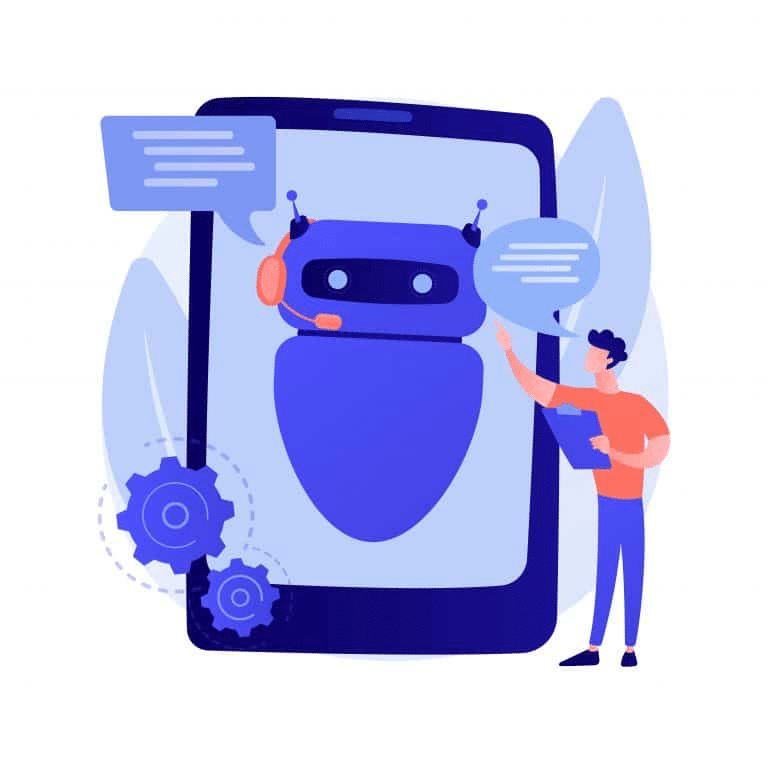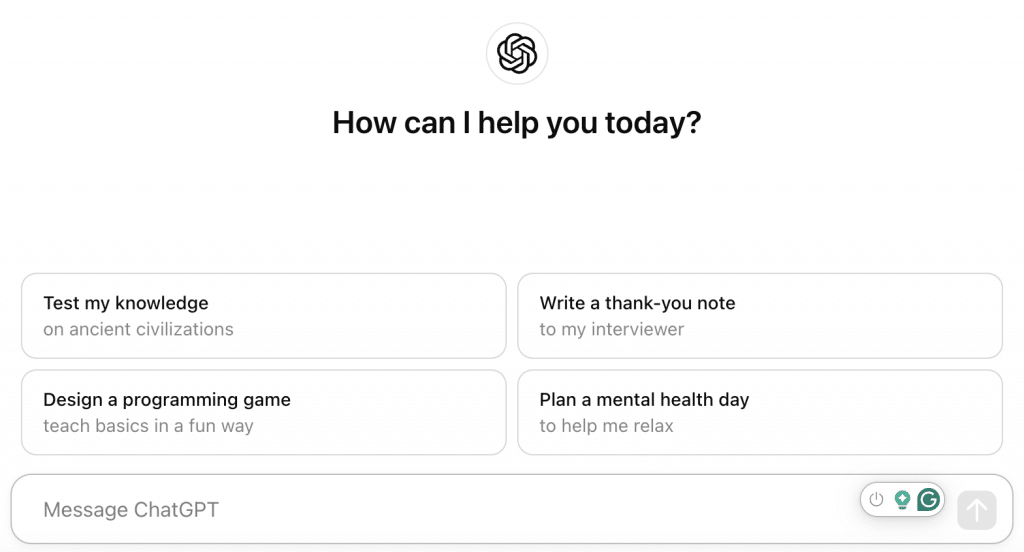In the era of digital convenience, chatbots have become an essential part of improving customer interaction.
Acting as on-demand client support, chatbots can even increase sales by over 60%.
However, they can be costly to develop and integrate into your business—especially if you require complex software and AI-based tools.
There are a few ways to make chatbot software more cost-effective, such as:
✅ Understanding how your business goals can influence chatbot cost.
✅ Clearly define what you need from the chatbot software.
In this article, we’ll discuss everything you need to know about the costs involved with integrating a chatbot into your website to improve user experience and drive sales.
What Is a Chatbot?

A chatbot is a software program designed to mimic human conversation with customers visiting a website, either through text or voice interactions. They are popular in industries like:
- E-commerce and sales.
- Travel and accommodation.
- Customer service.
- Informational and educational content.
This software is typically programmed to understand and process several prompts to address concerns site visitors may have.
These responses can either be simple or more complex, depending on the specific needs of your business. You can also use artificial intelligence (AI) to create chatbot responses.
In addition to being a helpful customer service tool, chatbots can also be designed to perform tasks like scheduling, providing recommendations, and handling simple transactions.
Different Types of Chatbots
Before integrating a chatbot into your website, it’s important to decide on the type of application first. Let’s take a look at the different options available.
AI-based chatbots
AI-based chatbots use AI and machine learning (ML) to train software to respond to non-scripted prompts from humans.
This self-learning capability allows them to continuously improve their responses, making them increasingly efficient at handling complex conversations.
AI chatbots are also great for providing dynamic, context-aware responses that offer a more natural, human-like interaction, which can significantly enhance customer satisfaction.
A well-known example of an AI-based chatbot is OpenAI’s ChatGPT:

Button-based chatbots
Button-based or menu-based chatbots are simpler in design and functionality compared to AI versions.
These chatbots are typically designed to guide users through a predefined list of options and responses.
However, the complexity of their responses is limited and there is also no room for flexibility.
This means that they are best suited for scenarios where interactions are predictable and a limited set of responses will be fine.
They won’t be helpful if a visitor’s query doesn’t match any of the pre-set questions and answers.
Rule-based chatbots
Rule-based chatbots operate on specific, predefined rules or a set of if/then conditions.
They are designed to detect specific keywords in questions and generate a predetermined response based on those phrases.
This type of chatbot is effective for structured interactions where accuracy and consistency are important. However, they lack flexibility and won’t be able to answer complex questions.
How Much Do Chatbots Cost?
Chatbot pricing depends on a number of factors, including the type of software you require and how detailed you want the application to be. Let’s take a closer look at what this means.
Simple chatbot development
The cost of developing and integrating a chatbot may vary. Generally, you can expect to pay anything from $500 to $10,000 per month, depending on the complexity of the chatbot you want.
Most software agencies and companies could also charge between $1,000 and $5,000 per month for a customized bot.
The price can also increase depending on if they develop the chatbot in-house or if they have to outsource the service. Within the last years, offshore software development in Mexico, Poland, India has increased in popularity thanks to skilled talent pool and affordable rates.
Some agencies may also offer custom chatbot pricing, especially if your business requires something specialized that doesn’t fall in the scope of their regular programming services.
In some cases, a chatbot vendor may also offer a pay-per-action or consumption-based package. This means that you’ll pay per customer request that the chatbot is prompted to process.
The starting rate for these pricing models is usually between $0.07 to $1 per request, depending on the complexity of the task.
| What Is Typically Included In A Monthly Plan? Most chatbot vendors will offer monthly subscription plans to clients who want to use their services. The most expensive option usually offers the most services, but you can typically expect the following to be included in most basic packages:
|
Specialized AI-chatbot technology
For experienced AI chatbots, costs can be anywhere from $20,000 to $80,000 more than simple software options.
Those bots are generated by NLP and ML technologies and provide much more helpful capabilities for absorbing and learning information.
Free chatbot options
There are free chatbot options on the market, but this software tends to have limitations on the number of customers you can reach and the platforms you can integrate them on.
Although free chatbots can be helpful to test the software and see if it would be something you could use, you will likely need to utilize a paid version anyway.
Which Factors Affect Chatbot Pricing?
Each chatbot is unique and developed according to specific demands and the requirements of the business. This is one of the main reasons why there is no fixed pricing.
Creating a chatbot is also a lengthy and time-consuming process that has a direct impact on the cost. Other factors that could influence the cost may include:
Custom development
A custom chatbot development will always affect the pricing, whether you hire a third-party company or decide to build it independently.
Developing your own chatbot may seem less expensive, but it can be time-consuming and challenging without the proper skills.
You could also make mistakes that could end up costing you more money to fix.
Business goals
The most critical factor affecting a chatbot’s development cost is how it would need to be programmed to meet your business goals.
The more advanced the goals, the higher the developmental scope and cost.
For example, if the chatbot is designed to generate leads, it may need to be integrated with CRM software and have sophisticated NLP processing to identify leads.
It would also require a software program that allows it to create targeted follow-ups. All of these requirements can be complex to develop, which can make it more expensive.
If you only require simple tasks—like customer support and marketing—costs are typically also lower.
Number of required supported platforms
The cost also depends on how many platforms the chatbot needs to support.
A chatbot operating across multiple platforms—like Facebook Messenger, WhatsApp, and a company’s website—will be more expensive because it needs more complex programming.
Chatbots that support many platforms will also need to be tested more thoroughly, which also influences the cost.
Type of integration
Integration of the chatbot with other systems—such as analytics, email platforms, CRM systems, or databases—can also affect the cost.
Complex integrations that are meant to streamline operations across various business functions also tend to increase the development price.
Internal process
Chatbots designed for internal use—such as automating processes or managing customer databases—can vary in cost based on the complexity of the tasks.
The more complicated the processes, the higher the cost of development and maintenance.
Complexity of the required data analysis
With the help of AI-powered tools like predictive analytics, machine learning, and data analysis algorithms, chatbots can talk like human beings and handle any complexity of queries.
Although this has made information more accessible and can improve productivity, it also affects the cost of developing specific chatbot tools and software.
That’s because building these tools can be complex and time-consuming, affecting the overall chatbot cost.
Technological tools and frameworks
The use of modern technology and databases can also influence cost.
While these technologies can simplify some aspects of chatbot development, their application often requires specialized knowledge, which can lead to additional expenses.
Which Features Does Your Chatbot Need?
The features you may require your chatbot to have will differ, depending on your business model and needs. The number of features you want can also affect the overall cost.
Here are a few features you might need to consider before developing your chatbot.
Simple user interface
When designing your chatbot platform, opt for a user-friendly interface that is easy to navigate.
A clean and intuitive design can also make the chatbot more appealing, which can help enhance user interaction.
Conversational maturity
To ensure that your chatbot understands user queries and provides accurate replies, it’s important to equip it with Natural Language Processing (NLP) technology.
This helps chatbots process questions better and can mimic a more human-like interaction.
In addition to NLP, it’s also beneficial for chatbots to be programmed with emotional intelligence (EI).
This can help the bot detect emotions and tone in queries to generate a more personalized response that mirrors human interaction.
Geo-location tracking
Enabling your chatbot to access and utilize geolocation data can help improve the relevance of its responses based on the user’s location.
This feature is particularly useful for businesses that require location-specific information or services.
Data automation
Chatbots can sift through large amounts of data and find relevant answers to customer queries.
You can leverage this ability to enable your chatbot to analyze existing solutions better and deliver a more targeted response.
Payment system
For e-commerce platforms, integrating a secure payment system within your chatbot is crucial.
This feature allows for seamless, secure transactions directly through the chat interaction, enhancing the user experience and encouraging sales.
Benefits of Using Chatbots for Your Business
Improved sales automation
Chatbots can transform the sales process by automating it from start to finish.
Not only can they respond to inquiries, but chatbots can also proactively engage customers by analyzing their search and purchase behaviors.
This capability allows chatbots to generate leads and nurture customer relationships effectively, making them a powerful tool for driving sales and engagement.
Enhanced customer experience
One of the primary advantages of using chatbots is their ability to provide instant responses at any time of the day.
This round-the-clock availability ensures that customer inquiries are addressed promptly, significantly enhancing the overall customer experience and satisfaction.
Better customer insight
Chatbots are great for gathering insights into market demand and customer preferences.
By analyzing interactions and queries, chatbots can identify trending products and customer needs.
These insights allow businesses to tailor their marketing and promotional strategies more effectively, ensuring they target the right audiences with the right messages.
Enhance Your Chatbot Development with Hyperise’s Personalization Services
In today’s swiftly evolving digital landscape, providing prompt customer service is essential.
However, chatbots aren’t always enough. This is where personalization tools like Hyperise can help you take your chatbots to the next level.
Hyperise can seamlessly integrate with various chatbot platforms to provide tailored images that resonate with your target audience.
Not only does this improve your customer experience, but it also increases your engagement rates and traffic.
Visit our website to try Hyperise out for free for 14 days to see how outreach personalization can help you achieve big business results.
Last Updated on April 7, 2025 by Ian Naylor